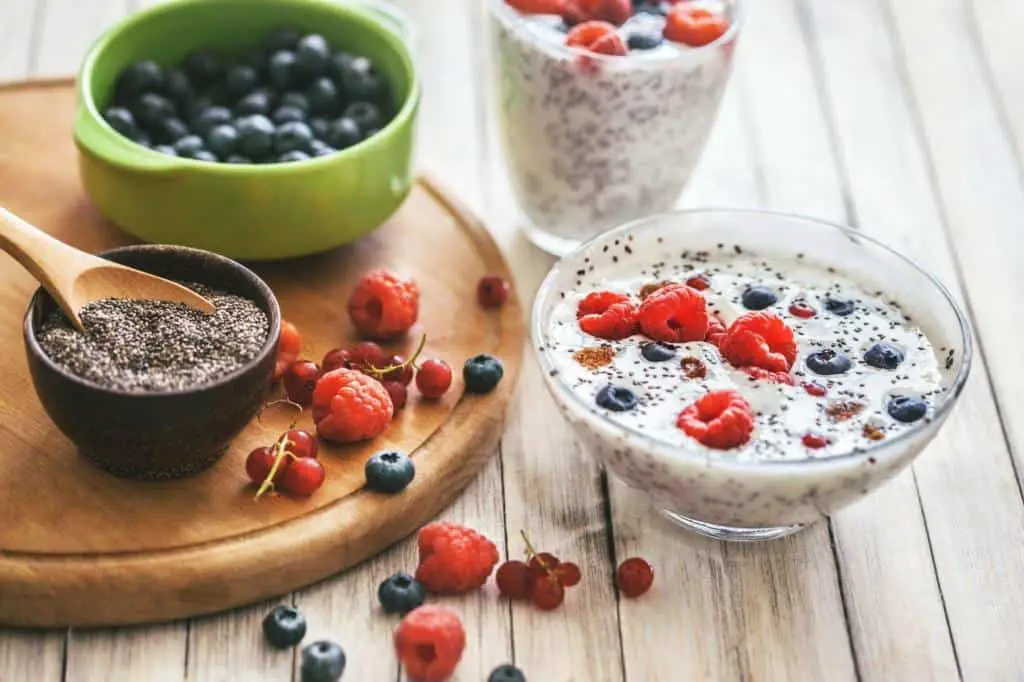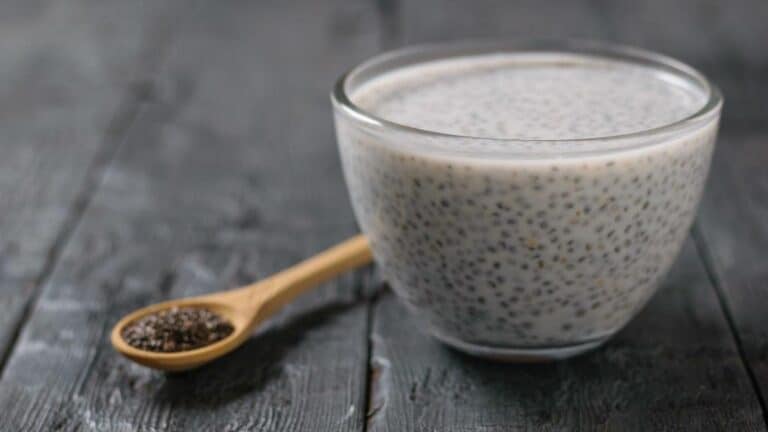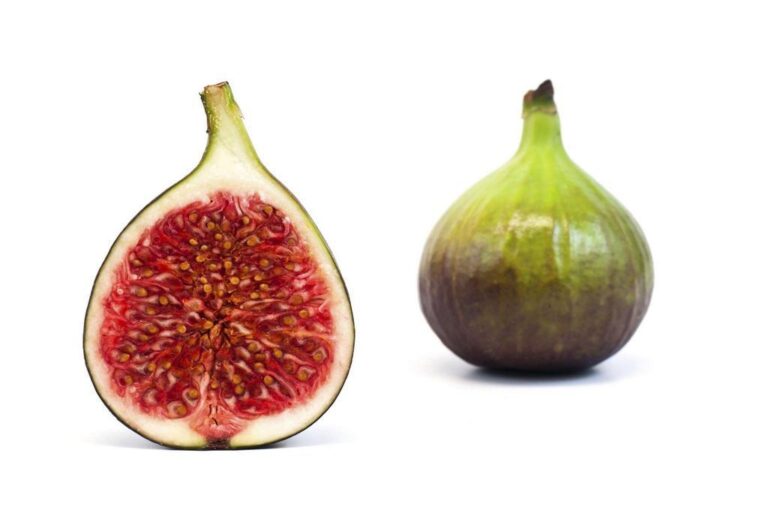Can You Eat Dry Chia Seeds in Yogurt? Make Your Yogurt Even Healthier

Hey there, have you ever heard of chia seeds? These tiny black and white seeds have become a popular superfood in recent years, known for their high fiber and omega-3 fatty acid content.
Chia seeds are tiny black or white seeds that come from the Salvia hispanica plant, which is a member of the mint family. They have been consumed for centuries and were a staple food of the ancient Mayan and Aztec cultures.
Nowadays, they are widely recognized as a superfood due to their impressive nutritional profile. One common way to enjoy chia seeds is by adding them to yogurt for a healthy and tasty breakfast or snack. But here’s the million-dollar question: Can you eat dry chia seeds in yogurt?
In this article, we’ll dive into the benefits and potential risks of consuming chia seeds without soaking them first and whether or not it’s safe to do so. So grab a spoon and let’s dig in!
Can You Eat Dry Chia Seeds in Yogurt?
Wondering if you can add dry chia seeds to your yogurt? The answer is yes! Chia seeds can be a nutritious and tasty addition to your favorite yogurt.
However, if you want to maximize their benefits, it’s recommended to let the chia seeds soak in water or yogurt for a few minutes before eating them. Soaking the seeds increases their digestibility and nutrient absorption.
Chia seeds offer many benefits, including protein, fiber, healthy fats, antioxidants, and essential minerals. They’re also hydrophilic, meaning they can absorb up to twelve times their weight in liquid, creating a unique texture when added to yogurt. The crunchy texture of the seeds adds an interesting twist to the creamy consistency of yogurt.
When adding dry chia seeds to yogurt, mix them well and allow them to soak for a few minutes. This will keep the chia seeds from sticking together and make sure they are spread out evenly in the yogurt. You can also add other toppings, such as fruit or nuts, to create a delicious and nutritious breakfast or snack.
Nutritional Benefits of Chia Seeds
One of the most notable nutritional benefits of chia seeds is their high fiber content. A single ounce (28 grams) of chia seeds contains about 11 grams of fiber, which is a whopping 42% of the recommended daily intake. This high fiber content in chia seeds is important for digestive health because it helps keep you regular and stops you from getting constipated. Additionally, fiber can help reduce cholesterol levels and improve heart health.
Chia seeds are also a good source of plant-based protein, containing about 4 grams of protein per ounce (28 grams). So, they are a great way to add protein to a vegetarian or vegan diet that might not have enough protein otherwise.
In addition to fiber and protein, chia seeds are high in omega-3 fatty acids, which are essential fats that play a crucial role in brain function, heart health, and inflammation reduction. A single ounce (28 grams) of chia seeds contains about 5 grams of omega-3s, making them one of the richest plant-based sources of these important nutrients.
Antioxidants, which help to shield the body from free radical damage, are also abundant in chia seeds. These harmful molecules can contribute to aging and the development of chronic diseases such as cancer and heart disease.
Digestibility and Nutrient Absorption of Chia Seeds
Chia seeds have recently gained popularity as a superfood, touted for their high nutrient content and numerous health benefits. However, the human digestive system may not be able to fully break down these tiny seeds, making their nutrients less bioavailable.
Chia seeds contain high levels of fiber, which is beneficial for digestive health. However, too much fiber can also hinder the absorption of other nutrients. Additionally, chia seeds contain phytic acid, which can bind to minerals such as calcium, zinc, and iron, making them less available for the body to absorb.
To make chia seeds more digestible and increase nutrient absorption, they can be soaked before consumption. Soaking chia seeds in water or other liquids for at least 30 minutes helps to break down the outer layer of the seed, making it easier to digest. This process also reduces the amount of phytic acid present in the seeds, which can increase the bioavailability of minerals.
Another way to enhance the digestibility and nutrient absorption of chia seeds is to grind them into a powder. This breaks down the seeds into smaller particles, which can be easier for the body to break down and absorb. Ground chia seeds can be added to smoothies, baked goods, or used as a thickener in recipes.
It is also important to note that chia seeds should be consumed in moderation. While they are nutrient-dense, they are also high in calories and can contribute to weight gain if consumed in excess. It is recommended to consume no more than 1-2 tablespoons of chia seeds per day.
Texture of Chia Seeds in Yogurt
When dry, chia seeds have a crunchy, nutty texture, but when soaked in liquid, they become gelatinous and have a slightly jelly-like consistency. This unique texture can add some excitement to an otherwise boring bowl of yogurt.
To achieve the gelatinous texture, chia seeds need to be soaked in a liquid for at least 30 minutes. When added to yogurt, the seeds will absorb some of the liquid in the yogurt, causing them to expand and thicken the overall texture of the dish. Some people enjoy the chewiness of the chia seeds in yogurt, while others may find the texture to be too slimy or gritty.
If you’re new to adding chia seeds to yogurt, it’s best to start with a small amount and gradually increase the quantity as you become accustomed to the texture. You can also experiment with different ways to prepare the seeds, such as blending them into a smoothie or mixing them with other ingredients to create chia pudding.
TIPS 
It’s worth noting that chia seeds can also be used as a substitute for other ingredients that are commonly used for texture in yogurt, such as granola or nuts.
This can be especially useful for those with allergies or dietary restrictions. Chia seeds can also give your yogurt a satisfying crunch without making it too sweet or adding too many calories.
Ways to Incorporate Chia Seeds in Yogurt
Adding chia seeds to your yogurt can be a simple and easy way to boost the nutritional value of your breakfast or snack. Here are a few ways you can incorporate chia seeds into yogurt:
- Mix it in: The simplest way to add chia seeds to your yogurt is to mix them directly into the yogurt. Start with a small amount, such as a teaspoon or two, and gradually increase the quantity as you become accustomed to the texture and flavor.
- Create a chia pudding: Mix chia seeds with milk, yogurt, and a sweetener of your choice, such as honey or maple syrup, to create a chia pudding. You can then layer the pudding with your favorite fruits or granola for a delicious and filling breakfast.
- Make a smoothie: Blend chia seeds into your favorite tropical smoothie recipe for an added boost of protein and fiber. The chia seeds will thicken the consistency of the smoothie, creating a more satisfying and filling beverage.
- Top with chia granola: Mix chia seeds with other ingredients, such as rolled oats and honey, to create a homemade chia granola. Sprinkle the granola on top of your yogurt for added crunch and flavor.
- Use as a substitute: Chia seeds can be used as a substitute for other ingredients commonly used in yogurt dishes, such as nuts or seeds. For example, instead of adding almonds to your yogurt, try adding chia seeds for a similar crunch.
- Try different flavors: Chia seeds can be added to any flavor of yogurt, so don’t be afraid to experiment with different combinations. For example, mix chia seeds into a fruity yogurt for a refreshing and nutritious breakfast.






